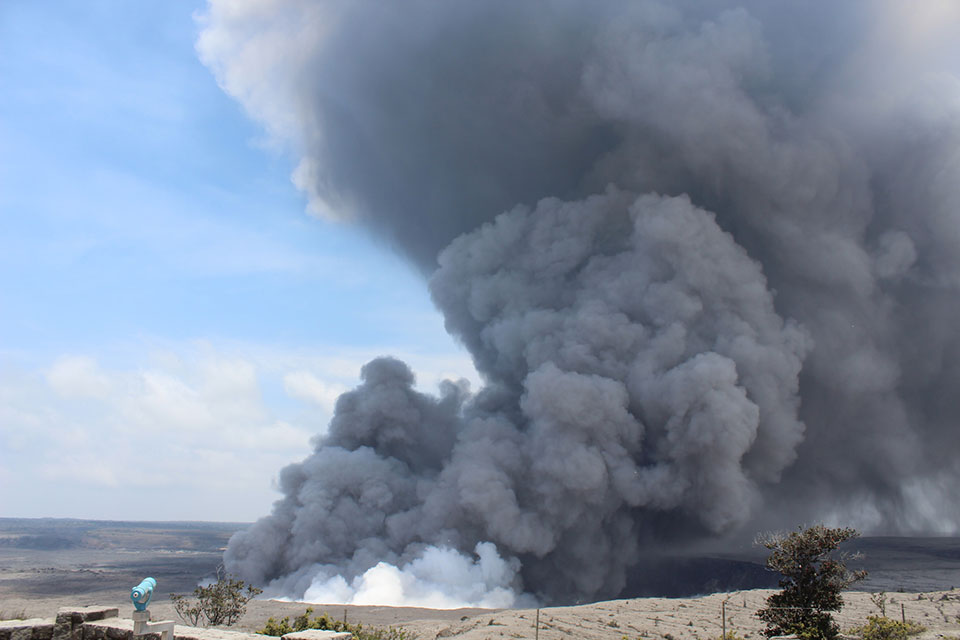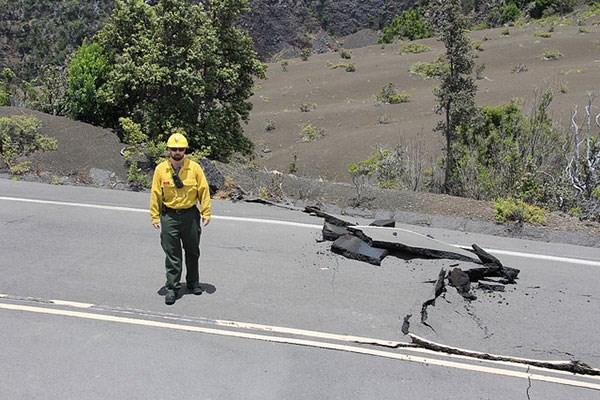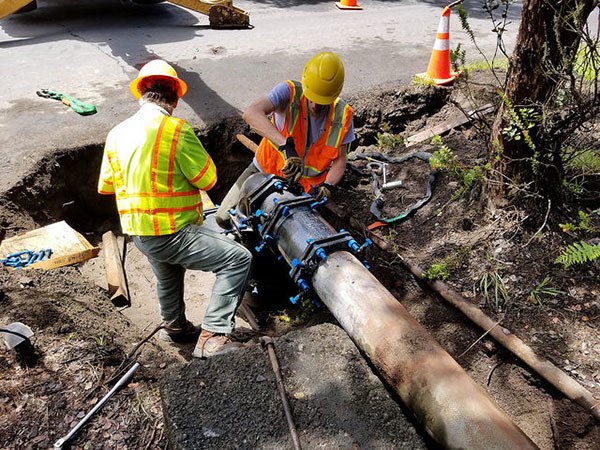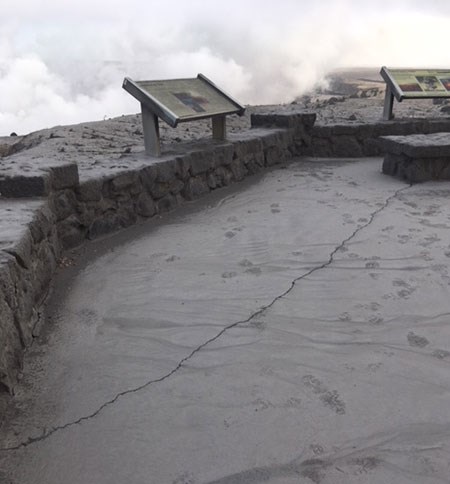News Release
You are viewing ARCHIVED content published online before January 20, 2025.
Please note that this content is NOT UPDATED, and links may not work. For current information,
visit https://www.nps.gov/aboutus/news/index.htm.

NPS Photo
|
Subscribe
|
Contact: Jessica Ferracane/Public Affairs Specialist, 808-345-4216 (cell)
Most of Hawai‘i Volcanoes National Park remains closed due to increased and damaging earthquakes, corrosive volcanic ash, and continuing explosions from Halema‘uma‘u, the summit crater of Kīlauea Volcano.
NPS Photo/Mike Johnson
What is visible throughout the park is ash and earthquake damage. Layers of acidic volcanic ash coat picnic tables, roads and overlooks, and ash has caused poor visibility on Highway 11, creating dangerous driving conditions at times. Hundreds of shallow earthquakes beneath the summit of Kīlauea have damaged at least three park buildings, fractured park roads, and snapped water lines. On Sunday, June 3, a magnitude 5.5 earthquake rattled the summit area at 3:50 p.m., cracking the overlook deck at Jaggar Museum. Over the weekend, the U.S. Geological Survey Hawaiian Volcano Observatory (HVO) reported more than 500 earthquakes in a 24-hour period – the most ever measured by HVO scientists.

NPS Photo
Although U.S Geological Survey aerial footage last week revealed that the former eruption site (unofficially called the “overlook vent”) within Halema‘uma‘u appears to be plugged with rock and other volcanic debris, explosions and resulting ash fall continue. The vent expanded from about 12 acres to more than 100 acres in May, following the ongoing explosions and collapses.
“Unfortunately, there’s no way to tell when we can reopen the Kīlauea section of Hawai‘i Volcanoes National Park. We’ll only reopen when it is safe to do so, and we will need time to assess, make repairs and clean up,” Superintendent Orlando said. “In the meantime, we ask for your understanding and support.”

NPS Photo
-NPS-
Last updated: June 6, 2018
